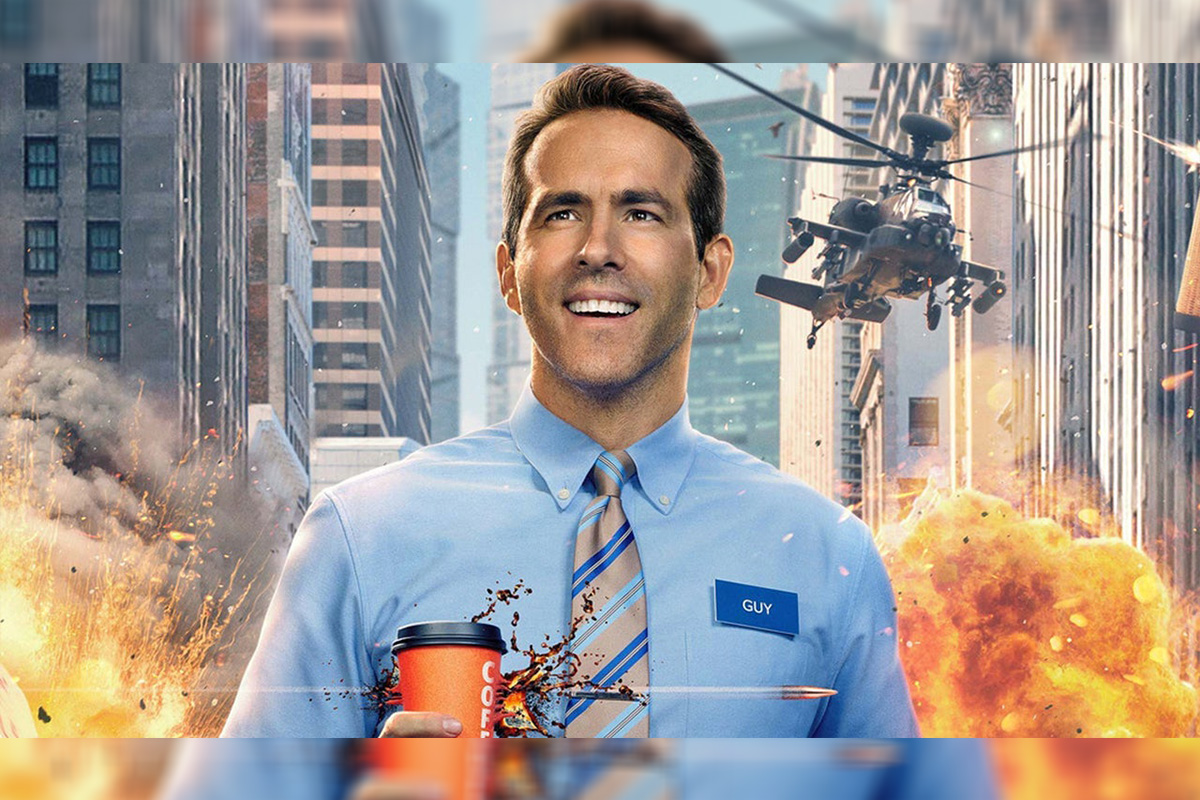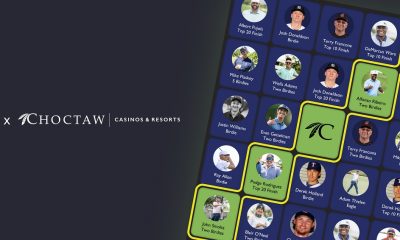Latest News
How Digital Domain Turned the World into a Video Game for ‘Free Guy’

In 20th Century Studios’ Free Guy, the lines between real and digital are deliberately blurred, with the focus jumping between live-action and CG based on the point of view of the characters. For the filmmakers, it was like creating two movies in one, each requiring different techniques, from replacing actors with digidoubles to creating entire CG cities. With only a handful of visual effects studios in the world capable of doing it all, 20th Century Studios turned to veteran VFX house and Oscar® winner, Digital Domain.
“We worked closely with Shawn Levy and the filmmakers to essentially create Free City twice, once by augmenting live-action footage with digital additions, and again as a fully CG environment right out of a video game,” said Nikos Kalaitzidis, Digital Domain VFX supervisor. “There’s really nothing else out there that is quite like it, and that allowed us to do things we’ve never done before.”
The Two Sides of Free City
Free Guy begins with a live-action introduction to the metropolis of Free City, as one of the game’s top players makes his dramatic entrance. As the character “BadAss” plummets toward the city, filmmakers used a combination of digital and practical effects, beginning with footage of the actor in a wire harness suspended by a retractable crane. BadAss soon turns his descent in a low-opening skydive, featuring a CG parachute, landing perfectly in a waiting convertible supercar. To make the transition from the fall to the landing, artists at Digital Domain created digidoubles of the actor, making an otherwise impossible stunt seem natural.
As the car speeds off into Free City, the filmmakers used a multi-camera rig and a crane on the car itself to film on the streets of Boston and against green screens. Digital Domain took that real footage of the car, the actor and the actress in the passenger seat, and created a new set of digi-humans for each performer, along with a CG model of the car. They then switched between live-action and digidoubles as the car dodges grenades, crowds, trees, motorbikes and more, all added by Digital Domain. Using a combination of live city footage with plates and CG buildings, the scene then pans up and through the window of the film’s protagonist Guy (Ryan Reynolds), as he awakes blissfully unaffected by the insanity around him.
Digital Domain began with previsualization, providing the filmmakers with multiple iterations of the city and what the world in general looked like, from both the live-action and game sides. Once Guy begins to gain notoriety, players frequently see his avatar wandering through the digital version of Free City. To create the game setting, Digital Domain used the previs assets, and built over 89 3D environments, created from modular buildings, then altered with different textures and materials. Artists then added individual flourishes by hand to replicate and stylize the real-world locations, including storefronts, residential and commercial buildings and more.
Mixing Worlds
To populate the digital version of Free City, Digital Domain created digital versions of many of the characters, including Guy. To create the digital protagonist, Reynolds went to Digital Domain’s motion capture stages, where the actions for his movements were recorded and added to a library. He participated in a series of facial scans, all of which were combined to create a game-version of Guy that was similar to Reynolds, but slimmed down and stylized.
With Guy’s legend growing, the two worlds blur more and more, leading to a confrontation at a construction site. As two players sent by the developers – one dressed as a pink bunny, the other as a cop – chase Guy into an unfinished skyscraper, Digital Domain created both the interior and exterior of the building. The actors then performed in front of green screens and physical set pieces, allowing the filmmakers to create a superhuman chase.
As the action progresses upward, Guy jumps from floor to floor with inhuman ability, dodging weapons fire throughout. To allow Guy to move with unnatural movement, Digital Domain introduced a digidouble of Reynolds, while also adding additional props and environmental damage to fill out the scene. The environment then begins to morph thanks to the machinations of the game’s programmers. Digital Domain then ensured the shifting building retained the proper scale against the actors, while artists continually adjusted the lighting and textures. Guy eventually reaches the top of the building, where drone and helicopter footage was used to convey the sense of movement. It also gave a foundation for the live-action world outside, which was altered to reflect the fictional city’s skyline.
After falling from the building, Guy selects a “bubble suit,” which allows him to bounce safely – if awkwardly – toward the ground. To create the scene, the filmmakers used a stunt performer on wires positioned against a green screen for close shots, and a digidouble version of Reynolds for the wide shots and the more extreme bounces. Reynolds himself was then filmed in a prop bubble to show Guy after reaching the ground. The footage was then combined with recordings of a fast descent captured by a drone.
Digital Domain also helped to create Free City’s “Multiplayer Lounge,” a location where avatars can mingle, explore in-game weapons and watch feeds of the game world on large jumbotron screens. The multi-story structure regularly features dozens of players, all of which were recorded separately against a blue screen and added later by Digital Domain. The footage of the game – including a memorable moment when the live-action Guy sees a digital version of himself – were also provided by the VFX studio.
Along with the digital version of the main actors, Digital Domain also created an additional 46 3D hero and background assets to help populate Free City.
The End of the World
When Guy grows too popular, the developers decide to reboot the game and start over. The sequence needed a unique look that still honored the game motif, so Digital Domain went back in time. Artists referenced low-res texture mapping and glitches from 80s video games.
The deletion of the world was completed using a relatively new technique known as “data-moshing,” where movement in one layer of footage is applied to another. The result is a scene that looks as if a digital video has been pixelated and damaged. To create this effect, Digital Domain used Houdini to render low-res texture maps, while combining it with Nuke. After a psychedelic final swirl, the world disappears, leaving a white void where only Guy remains.
Rebuilding Actors
Along with the traditional digidouble work and animated characters, Free Guy also marks one of the first feature film uses of Digital Domain’s proprietary face-swapping tool, Charlatan. Utilizing neural networks, Charlatan takes existing footage and analyzes the movements down to the minutia. Artists then introduce a new face digitally constructed by hand, and the neural network in Charlatan matches it with the existing footage, replacing the original performance. Artists can then alter the facial movements to incorporate new expressions.
Late in the film, BadAss gives a speech with far-reaching implications. It’s vital to the plot and tone, and after seeing the finished results, the filmmakers decided that they needed to change the dialogue and add to it for the scene to have the necessary impact. Rather than schedule a new series of reshoots and force the actor back to read a handful of lines, various methods of animating the digital character were employed, with none producing a realistic and acceptable result. So Digital Domain decided to try Charlatan.
Artists created a new facial model of BadAss by hand, then used Charlatan to combine it with the original performance. Once the neural network was able to link the two and replace the original animation, the results were a more realistic digital avatar that could then mimic the actor’s facial mannerisms and movements to mimic reading the new lines. The actor then later recorded the new dialogue in ADR.
“Free Guy was an ambitious project that required expertise in multiple techniques and disciplines to make it. And that’s exactly what Digital Domain was built for,“ said John Fragomeni, global VFX president at Digital Domain. “We worked closely with the filmmakers to help create a unique look and feel for the live-action world of Free City and the gameplay world, and we think audiences are going to be blown away by what they see.”
Free Guy is in theaters now.
Cryptocurrency
BitLine Enhances Onboarding Experience in Collaboration with Jumio: Simplified KYC for Casino Patrons

This collaboration emphasizes convenience, security and regulatory compliance
Through the BitLine app, users can seamlessly transact with up to US$10 million in casino chips 24/7
BitLine, a pioneering provider in the integration of digital assets for direct access to casino chips, proudly announces a strategic alliance with Jumio, an industry leader renowned for its comprehensive know-your-customer (KYC) solutions.
This partnership marks a significant milestone as BitLine streamlines its onboarding process for casino patrons, ensuring a seamless and secure journey into the realm of digital asset-based payments for gaming.
The collaboration between BitLine and Jumio signifies a commitment to delivering unparalleled convenience while upholding the highest standards of security and regulatory compliance. By leveraging Jumio’s advanced technology, BitLine reinforces its dedication to building trust among users and offering a frictionless experience for individuals seeking access to casino chips via digital assets.
Richard Jones, the Chief Executive Officer for BitLine by Ibanera, expressed enthusiasm about the partnership, stating: “Trust and compliance are the cornerstones of every successful casino venture. At BitLine, our vision to innovate this industry through digital assets hinges on maintaining trust and adherence to regulations. Our collaboration with Jumio represents a monumental stride towards achieving this vision, ensuring that casino patrons transact securely and confidently through our platform.”
Echoing this sentiment, Robert E Prigge, the Chief Executive Officer for Jumio, commented: “The evolving landscape of digital assets presents endless possibilities and BitLine’s innovative approach has reshaped the casino industry. By eliminating withdrawal limitations and expanding accessibility, BitLine has ushered in a new era of gaming. We are thrilled to contribute to BitLine’s journey by providing essential elements of security and compliance.”
BitLine by Ibanera grants cryptocurrency owners unprecedented access to up to US$10 million in casino chips, 24/7/365, serving as a conduit for liquidity on the casino floor. Through the intuitive BitLine app, casino enthusiasts worldwide can initiate transactions within minutes, leveraging their digital assets to unlock funds effortlessly.
Latest News
Sportradar Names New CFO, Craig Felenstein

Sportradar Group AG today announced that Craig Felenstein has been named Chief Financial Officer of the Company, effective June 1, 2024. Felenstein joins the Company from Lindblad Expeditions where he most recently served as Chief Financial Officer. He will report directly to Sportradar Chief Executive Officer Carsten Koerl.
Felenstein brings nearly 30 years of senior finance and operating experience for US publicly listed companies across the media, entertainment, experiential and digital content industries to his new position at Sportradar. Most recently, Felenstein served as Chief Financial Officer at Lindblad Expeditions, a global leader in expedition cruises and adventure travel, where he oversaw the company’s global finance organization, as well their corporate development, information technology and human resources functions. In his role as Sportradar’s Chief Financial Officer, Felenstein will lead the company’s global finance, accounting and investor relations functions. Felenstein has a unique blend of financial rigor and operational insight and will partner with the rest of the executive leadership team to advance the company’s key strategic initiatives and grow the business while maintaining strong relationships with the investment community. He will be based in New York.
Carsten Koerl, CEO, Sportradar said: “With Craig’s deep international experience and successful track record building finance organizations as a CFO at US listed public companies, I am confident that he will be a strong addition to our team. His track record of helping drive financial strategy and building shareholder value will be instrumental to our continued success. We want to express our deep gratitude to Ger Griffin for his meaningful contributions to Sportradar during a transformational growth period for our Company.”
Prior to his tenure at Lindblad, Felenstein served as Senior Vice President of Investor Relations and Strategic Finance at Shutterstock where he oversaw all interaction with the investment community while leading the financial planning and analysis and corporate development functions. Prior to Shutterstock, he served in various management roles at Discovery Communications, LLC, including Executive Vice President of Investor Relations. At the same time, he was a member of the executive team for several of Discovery’s businesses including serving as the Chief Financial Officer of Digital, Chief Financial Officer of US Network Revenue and Chief Financial Officer of Animal Planet. Prior to Discovery Communications, he held senior positions at News Corporation, Viacom Inc., and Arthur Andersen & Co.
Felenstein said: “Sportradar has built an impressive leadership position in the rapidly growing global sports technology market and the Company is ideally situated to deliver sustained growth given their strong content portfolio, unmatched product offerings and commitment to industry innovation. I am excited to work with Carsten and the entire Sportradar team, as well as the Board of Directors, to capitalize on the significant growth opportunities ahead and deliver additional value to our clients, partners and shareholders.”
Compliance Updates
Brazil’s Ministry of Finance Appoints Régis Dudena as Secretary of Prizes and Betting

Regis Dudena, a seasoned lawyer with expertise in Public and Regulatory Law, has been appointed as the new Secretary of Prizes and Betting at the Ministry of Finance in Brazil. Dudena’s appointment ordinance is signed by Rui Costa, Minister of the Civil House.
The new secretary had already been visiting the Ministry of Finance and getting closer to the entire group at the Secretariat of Prizes and Betting, until then led by Simone Vicentini, deputy secretary.
The appointment of the lawyer is attributed to the Executive Secretary of Finance, Dario Durigan. Dario and Dudena worked together at Palácio do Planalto during Dilma Rousseff’s government.
Both worked in the Legal Affairs secretariat of the Civil House. Dudena’s name is linked to other names on the left. He has good relations with Edinho Silva (PT), mayor of Araraquara (SP).
The SPA started operating two months ago. Since then, it had been without a permanent boss. Lawyer José Francisco Manssur, special advisor to the Ministry of Finance who coordinated the regulation of sports betting from the beginning, was the most likely to take on the position. But he was exonerated under pressure from Centrão politicians.
Bets representatives welcomed the name Régis Dudena.
From the beginning, the SPA was under the responsibility of Simone Vicentini, appointed as deputy secretary. Since then, it has edited the ordinances that defined requirements for laboratory accreditation and the sector’s regulatory policy.
Under her supervision, three laboratories have already been approved, GLI, eCogra, and BMM. Last week, the ordinance establishing the rules for payment transactions to be complied with by sports betting and online gaming operators was also published.
-

 Latest News3 days ago
Latest News3 days agoXpoint Launches Groundbreaking New Capability to Reduce Geolocation Costs for Operators
-

 Latest News7 days ago
Latest News7 days agoOdditt Appoints Elaine Milardo as its New Chief Technology Officer
-

 Latest News7 days ago
Latest News7 days agoBroadcast Legend Mike Francesa Renews Exclusive Partnership with BetRivers
-

 Latest News4 days ago
Latest News4 days agoFBMDS, Planet Invest and EverPlay Score a Fantastic Goal in a Revolutionary Partnership Involving Ronaldinho Gaucho
-

 Latest News7 days ago
Latest News7 days agoLow6 partners with Choctaw Casinos & Resorts to deliver new interactive game
-

 Compliance Updates7 days ago
Compliance Updates7 days agoElys BMG Group Announces Approval for The Ugly Mug Sportsbook in Washington, DC.
-

 Latest News7 days ago
Latest News7 days agoPlaza Hotel & Casino to celebrate summer with Friday night fireworks
-

 Latest News7 days ago
Latest News7 days agoScientific Games Commemorates Official Ribbon-cutting for Advanced Instant Scratch Game Production Technology at Global Headquarters


















